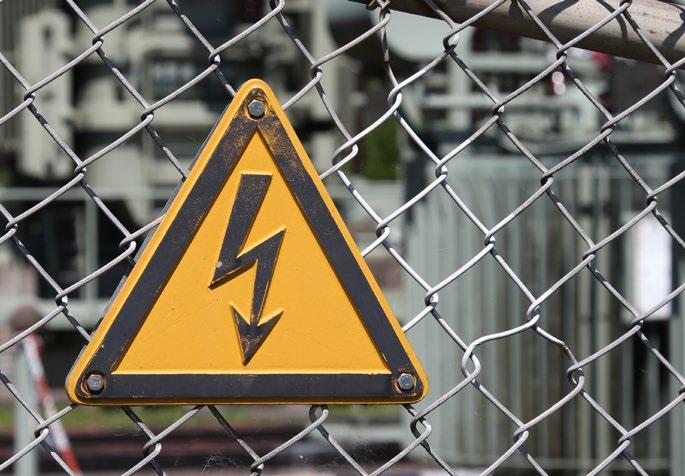
3 minute read
electrical Fatality Incident Data
ELECTRICAL FATALITY
INCIDENT DATA
eACH YeAR, THe eLeCTRICAL ReGuLATORY AuTHORITIeS COunCIL (eRAC) ReLeASeS TRenD AnALYSIS DATA On eLeCTRICAL FATALITIeS In AuSTRALIA AnD neW ZeALAnD. BeLOW IS A SnAPSHOT OF THe STATISTICS AnD THe KeY TAKeAWAY FROM THIS YeAR’S RePORT.
eRAC is made up of all of the electrical safety regulators across the country as well as new Zealand and is chaired by energy Services Victoria. Recently eRAC released its report on all fatalities in 2019/20, including summary data going back to 2000/01. Reading this report is very sobering and it shows how dangerous an industry we work in, particularly if corners are cut or chances are taken.
Fatality Incidents
Twelve electrical deaths were recorded in Australia and new Zealand in 2019/20. This is equivalent to 0.39 deaths per million people. eight of the twelve deaths occurred in Australia. There were six distribution network related deaths, with five of these deaths being associated with overhead conductors and one was associated with a substation. Six deaths involved customers’ installations, appliances or equipment. Of the total twelve people who were electrocuted in 2019/20, 42% (5 of 12) were electrical workers, 50% (6 of 12) were non-electrical workers and 8% (1 of 12) were from the general public. In all, eleven of the twelve deaths were in a workplace and one death was in a non-workplace.
The Trend Analysis
When looking at the trend analysis for fatalities over the last twenty years, from 2000/01 to 2019/20, there were 398 electrical deaths in Australia and new Zealand. The highest single year was 2000/01 with a staggering 39 deaths. The lowest was five in 2017/18. With 398 deaths over a twenty-year period, industry has an average of almost twenty deaths each year. Of the total of 398 deaths, 176 were members of the public, 125 were non-electrical workers, 75 were electrical workers and the balance were supply workers. Over this period, some 90% (123 of 137) of the electrical deaths associated with electricity networks were as a result of working on or near energised overhead conductors. Of the fourteen other deaths associated with electricity supply networks, the balance was mostly while working in substations with two fatalities from underground cables. Between 2000/01 and 2019/20 there were 261 deaths involving consumer installations or equipment. In most years, the deaths from consumer fixed wiring made up approximately two-thirds of the number of deaths, with the other third being from consumer equipment, appliances or accessories. The main causes of deaths involving consumer installations were from misuse or interference with equipment or wiring (around 50%); failure or deterioration of equipment or wiring (around 17%); poor work practices (around 16%); and other causes which make up around 17%.
The Importance of Being Vigilant
While it is encouraging to see that the number of deaths by electrocution has declined in recent years, it remains disappointing to read that we still have unnecessary deaths each and every year. This report is a welcome reminder that we need to be vigilant in maintaining a safe working environment. neCA members are made up of a range of varied businesses from large multi-state employers to small family-run businesses. Our members work on electrical, data and telecommunications, refrigeration and air-conditioning, and test and tag. In all of these areas it is critical to work safely.
neCA helps members to manage the WHS risks in our industry through a range of safety management systems that are either included in their base membership or available for purchase at rates tailored to their business size and needs. neCA also provides members with access to WHS information and Australian Standards through our various communications channels, on our Technical Knowledge Base (TKB) and website, at various roadshows and workshops and via local technical and safety staff in each Branch.
Peter Lamont
Director ACRS and Senior Policy Advisor Peter.Lamont@neca.asn.au










